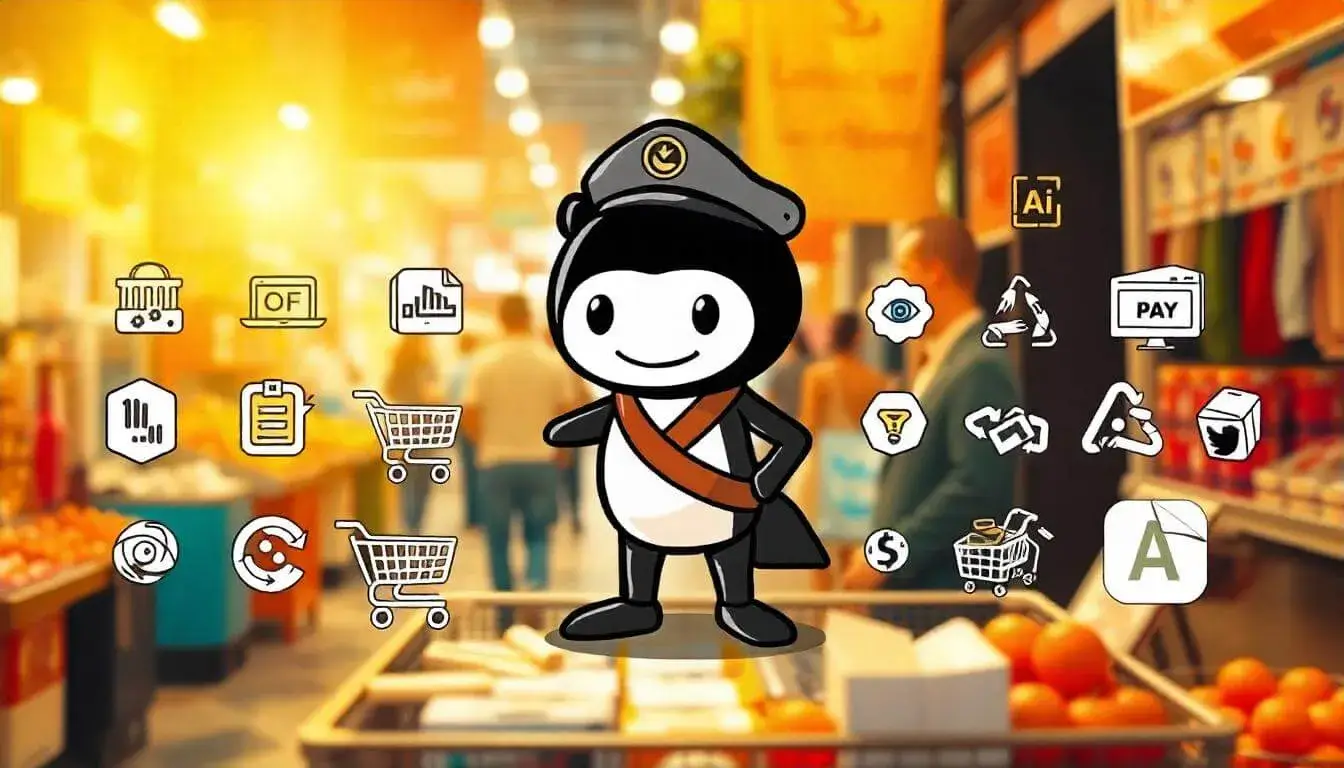How to Use GitHub Copilot for E-commerce Code Development
In the competitive world of e-commerce, having a robust and efficient website is critical. However, developing and maintaining an e-commerce platform can be time-consuming and challenging. This is where GitHub Copilot, an AI-powered code completion tool, comes into play. It assists developers in writing code faster and with fewer errors, making it a game-changer for e-commerce website development. In this article, we’ll explore how to leverage GitHub Copilot for e-commerce projects, providing real-world examples and actionable tips.
Why Use GitHub Copilot for E-commerce Projects?
GitHub Copilot, powered by OpenAI, is designed to enhance coding efficiency by generating context-aware code snippets directly within your integrated development environment (IDE). Here’s why it’s particularly valuable for e-commerce projects:
-
Accelerated Development:
Copilot speeds up coding by suggesting boilerplate code, function definitions, and even complex logic. -
Reduced Errors:
The tool minimizes syntax and logical errors by suggesting best practices and validated code patterns. -
Enhanced Collaboration:
Teams working on e-commerce websites can use Copilot to standardize code structures and streamline development. -
Improved Productivity:
By automating repetitive coding tasks, Copilot allows developers to focus on higher-value problem-solving.
Key Benefits of GitHub Copilot for E-commerce Website Development
1. Building Feature-Rich Websites
E-commerce websites require features like product catalogs, shopping carts, payment gateways, and user authentication. GitHub Copilot can assist in quickly setting up these features using common frameworks like Django, Laravel, or Node.js.
2. Optimizing Backend Logic
E-commerce websites often deal with inventory management, order processing, and database queries. Copilot helps write optimized backend logic, saving time on debugging and refinement.
3. Streamlining Frontend Development
Frontend components, such as dynamic product displays and responsive user interfaces, can be easily developed with Copilot’s assistance. It suggests HTML, CSS, and JavaScript snippets tailored to your project.
4. Supporting Multilingual and Multi-Currency Features
For global e-commerce businesses, Copilot aids in integrating multilingual support and handling currency conversions efficiently.
How to Get Started with GitHub Copilot for E-commerce Projects

Step 1: Install GitHub Copilot
To use Copilot, ensure you have the following prerequisites:
- A GitHub Copilot subscription.
- A compatible IDE such as Visual Studio Code, Neovim, or JetBrains IDEs.
Install the GitHub Copilot extension/plugin from your IDE’s marketplace and sign in with your GitHub account.
Step 2: Set Up Your E-commerce Project
Start by initializing your e-commerce project. For example:
- Use a framework like React or Vue.js for the frontend.
- Choose Node.js, Python (Django), or Ruby on Rails for the backend.
- Set up a database like MySQL, PostgreSQL, or MongoDB.
Copilot can assist by generating starter templates or configuration files for your chosen stack.
Step 3: Leverage Copilot for Code Suggestions
As you type in your IDE, Copilot will suggest code snippets based on the context. For example:
- Frontend Example: Writing a responsive product grid in React.
- Backend Example: Creating a REST API for managing products and orders.
Step 4: Integrate and Test
Use Copilot to write integration code for third-party services such as payment gateways (e.g., Stripe, PayPal) and shipping APIs. Then, write test cases for these integrations to ensure reliability.
Leveraging GitHub Copilot in E-commerce Code Development
Here are some specific ways Copilot can be a valuable tool for e-commerce projects:
1. Creating User Authentication Systems
Every e-commerce website needs secure user login and registration. With Copilot, you can quickly generate authentication code.
Example:
In a Node.js project using Express.js and MongoDB:
const express = require('express');
const bcrypt = require('bcrypt');
const User = require('./models/User');
const registerUser = async (req, res) => {
const { username, password } = req.body;
const hashedPassword = await bcrypt.hash(password, 10);
const user = new User({ username, password: hashedPassword });
await user.save();
res.status(201).send('User registered');
};
Copilot can suggest and autocomplete much of this boilerplate, saving you valuable time.
2. Building Shopping Cart Logic
Implementing cart functionality can be tricky, but Copilot simplifies the process by suggesting efficient algorithms.
Example:
Updating the cart’s total price dynamically:
const updateCartTotal = (cartItems) => {
return cartItems.reduce((total, item) => total + item.price * item.quantity, 0);
};
3. Generating APIs for Product Management
An e-commerce website requires APIs for adding, updating, and deleting products. Copilot can generate RESTful endpoints based on your database schema.
Example:
Creating an endpoint for adding new products:
app.post('/api/products', async (req, res) => {
const { name, price, description } = req.body;
const product = new Product({ name, price, description });
await product.save();
res.status(201).send('Product created');
});
Real-World Examples of Copilot in E-commerce Projects

1. Startup Scaling with Rapid Prototyping
A small e-commerce startup used Copilot to prototype its platform. By generating boilerplate code for key features like user authentication, payment integration, and inventory management, they launched their website 30% faster than expected.
2. Optimizing Legacy Code for Established Businesses
An established online retailer integrated Copilot into their development workflow. It helped refactor legacy code, making the platform more efficient and reducing server costs.
3. Building Custom Plugins
A developer creating custom WooCommerce plugins used Copilot to streamline PHP code writing. Copilot’s context-aware suggestions sped up the development process significantly.
Tips for Maximizing GitHub Copilot’s Potential
-
Understand Copilot’s Limitations:
Copilot generates code based on training data, which may not always align with best practices. Always review and test the suggestions. -
Customize Your Prompts:
Provide detailed comments or clear variable names to get more accurate suggestions. -
Pair with Other GitHub Features:
Use Copilot alongside GitHub Actions for CI/CD and GitHub Projects for task management. -
Encourage Collaboration:
Use Copilot-generated code as a starting point and collaborate with your team to refine it.
Challenges and Considerations
While Copilot is a powerful tool, it’s not without challenges:
- Dependency on Context: Copilot’s suggestions depend heavily on the quality of your input.
- Code Review Required: Always conduct thorough reviews to ensure code quality and security.
- Limited Domain-Specific Knowledge: For niche e-commerce requirements, Copilot might need guidance or adjustments.
Conclusion
GitHub Copilot is revolutionizing the way developers approach coding, especially for complex projects like e-commerce websites. By automating repetitive tasks, suggesting robust code snippets, and integrating seamlessly into your workflow, Copilot empowers developers to focus on creating innovative solutions.
Whether you’re building a new e-commerce platform or optimizing an existing one, leveraging GitHub Copilot can save time, improve code quality, and accelerate development. Start using Copilot today and unlock its potential for your e-commerce projects!
- How to Use GitHub Copilot for E-commerce Code Development
- Deploying a Scalable E-commerce Backend with GitHub Actions and Docker
- How to Use GitHub’s Community Features to Gather Feedback on E-commerce Features
- GitHub Codespaces: The Ultimate Tool for E-commerce Development Teams
- Creating a Personalized Product Recommender: Using GitHub to Build and Share Machine Learning Models
- Building a Plugin or Extension for Your E-commerce Platform: Starting with GitHub
- Building a Headless E-commerce Storefront: GitHub as Your Collaboration Hub
- Best Practices for Collaborative E-commerce Development on GitHub
- Automating E-commerce Testing with GitHub Actions and Selenium
- Top GitHub Repositories for E-commerce Development
- How to Use GitHub Actions for Ecommerce Workflows


